Maintaining your HVAC system is essential for ensuring the system runs efficiently, prolonging its lifespan, and keeping energy costs under control.
An effective HVAC maintenance schedule is not only crucial for residential systems but is also a key practice in commercial and industrial settings. By following a structured schedule, you can avoid unexpected breakdowns, keep your indoor air quality high, and ensure that your system operates at optimal efficiency year-round.
This guide will take you through everything you need to know about creating an HVAC maintenance schedule that is reliable and easy to follow.
Why is an HVAC maintenance schedule important?
Your HVAC system, much like a car, requires regular maintenance to function efficiently. A well-planned maintenance schedule offers several key benefits. First, regular tune-ups help the system run more efficiently, reducing energy consumption and saving on utility bills. Secondly, timely maintenance helps prevent wear and tear, which extends the life of your HVAC system.
Clean filters and ducts also ensure better air quality, helping to prevent health issues like allergies and asthma. Additionally, regular inspections allow for early detection of small issues before they become costly repairs. Finally, by following a schedule, you can rest assured that your HVAC system won’t break down when you need it most, such as during extreme weather.
But before you start creating a maintenance schedule, you need to learn about the key components of a maintenance schedule.
What are the key components of a maintenance schedule?
To ensure your HVAC system is operating optimally, your schedule should include tasks to be performed on a monthly, quarterly, bi-annual, and annual basis. Each time frame has specific tasks that address different components of the HVAC system.
1. Monthly Maintenance
Monthly HVAC maintenance focuses on easy, quick tasks that are essential for keeping the system in top condition. First, clean or replace the HVAC filters—dirty filters can restrict airflow, making the system work harder than it should and consume more energy.
Most HVAC professionals recommend changing filters every 30 days, though this can vary depending on your system and environmental factors such as pets or high pollen levels. It is also important to inspect the thermostat settings to ensure the system is maintaining a comfortable temperature when you’re home and saving energy when you’re away. Finally, check for obstructions around both the indoor and outdoor units, ensuring that furniture or debris is not blocking airflow.
2. Quarterly Maintenance
Quarterly maintenance tasks are more technical and dig a bit deeper into the system. One crucial task is inspecting and cleaning the ductwork. Dirty or clogged ductwork can significantly reduce your system’s efficiency, so it’s important to check for dust buildup or leaks that may need sealing.
Another key aspect is inspecting refrigerant lines. Check for any visible signs of leaks or damage, as leaking refrigerant can lead to poor performance and higher energy bills. Testing safety controls is also vital. Your HVAC system contains various safety controls designed to prevent overheating or other malfunctions, so ensure these are functioning properly.
3. Bi-Annual Maintenance
Bi-annual HVAC maintenance should be timed to coincide with the beginning of the heating and cooling seasons—spring and fall. These checks prepare the system for peak usage. A key bi-annual task is cleaning the condenser and evaporator coils. Dirty coils reduce the system’s ability to cool your home and cause the system to run longer, which increases energy costs. It’s also important to inspect electrical connections and tighten any loose wiring.
Loose or faulty connections can lead to unsafe operation and reduce system longevity. Additionally, lubricate all moving parts to prevent friction in motors, which can increase energy use. Don’t forget to check the fan motor and blades to ensure they are working efficiently. If any parts show signs of wear or malfunction, they should be repaired or replaced promptly.
4. Annual Maintenance
Yearly maintenance is essential to keep your system running at peak performance, and many of these tasks should be handled by a professional HVAC technician. Start by scheduling a professional tune-up. The technician will check airflow, refrigerant levels, thermostat calibration, and electrical components to ensure the system is functioning efficiently. Cleaning the condensate drain is also critical because a clogged drain can cause water damage and increase indoor humidity.
Next, have the technician measure refrigerant levels. Low refrigerant is a sign of a leak and can reduce the system’s efficiency. If necessary, the technician can recharge the refrigerant and repair any leaks. For homes with a furnace, it’s essential to test the heat exchanger for cracks or corrosion, as a cracked heat exchanger can leak carbon monoxide, a deadly gas. Finally, check the system controls to make sure everything starts, operates, and shuts off properly.
How can you create a custom maintenance schedule?
The ideal maintenance schedule for an HVAC system depends on several factors, including the system’s age, local climate, and the type of HVAC system you have. To create a custom schedule, start by assessing the age and type of your system. Older systems typically require more frequent maintenance.
The type of system—whether it’s a central air system, split system, or heat pump—will also dictate the specific tasks needed and their frequency. Next, consider environmental factors. If you live in a region with extreme temperatures, your system will experience more wear and tear, requiring more frequent maintenance. Homes in high-pollen areas or those with pets may need more frequent filter changes.
It’s also useful to use seasonal reminders to stay on track. Schedule bi-annual tune-ups in the spring and fall to prepare for heavy use in summer and winter. You can mark your calendar, set phone reminders, or sign up for a service plan with a local HVAC contractor to automate these tasks.
Finally, consider incorporating smart technology into your HVAC system. Smart thermostats or HVAC monitoring systems can track the health of your system in real time and alert you to potential issues before they escalate into costly repairs.
Frequently Asked Questions
Below are some commonly asked questions to consider:
1. How does weather impact HVAC maintenance needs?
Extreme weather conditions, like heavy rain, snow, or heat, can strain your HVAC system. In hot climates, cooling systems may require more frequent maintenance, and in colder climates, heating components need more attention.
2. Should I close vents in unused rooms to save energy?
No, closing vents can disrupt airflow and make your HVAC system work harder, leading to reduced efficiency and potentially damaging the system.
3. How do I prevent pests from entering my HVAC system?
Seal gaps around vents, install mesh screens over outdoor units and regularly inspect the ductwork for damage. Keeping the area around the outdoor unit clean and clear of debris also helps deter pests.
Speak to a professional about making an HVAC maintenance schedule
Creating an effective HVAC maintenance schedule is a proactive approach to keeping your system running efficiently and preventing costly repairs. By sticking to a schedule that includes monthly, quarterly, bi-annual, and annual tasks, you can prolong the life of your HVAC system, reduce energy consumption, and improve indoor air quality.
For those less comfortable with DIY maintenance, scheduling regular visits with an HVAC professional is highly recommended. A well-structured maintenance schedule ensures that your HVAC system will continue to provide comfort and efficiency for years to come.
Speak with a professional HVAC maintenance service in your area today to get yourself a maintenance schedule that fits your HVAC system and your budget.

